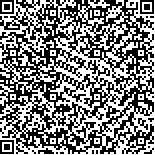| This article has been:Browse 555Times Download 1785Times |

scan it! |
|
|
| DOI:10.13522/j.cnki.ggps.2024121 |
|
| Study on the introduction of bitter gourd germplasm resources and variety adaptability |
|
SUN Xincheng, AN Junyan, YANG Lianyong, HUANG Lin, JIANG Wan, CHEN Weiping, KANG Jie,
CHEN Zhibing, PENG Yuanqun, LI Qi, ZHENG Ying, ZHANG Zhongwu
|
|
1. Changde Agriculture and Forestry Science Academy, Changde 415000, China; 2. Agriculture and Forestry Science and Technology College of Hunan Applied Technology University, Changde 415000, China; 3. Changde Agricultural Technology Extension Center Station, Changde 415000, China; 4. Changde Agricultural and Rural Bureau, Changde 415000, China
|
| Abstract: |
| 【Objective】To provide a theoretical basis for the introduction of bitter gourd germplasm resources and the identification of variety adaptability in Dongting-Lake area. 【Method】This study introduced 10 bitter gourd resources to carry out variety adaptability test in Dongting-Lake area, and evaluated and identified their 19 main agronomic traits and correlation analysis. 【Result】There were differences in stem diameter, internode length, leaf length, leaf width, petiole length, first female flower node, melon longitudinal diameter, melon transverse diameter, melon flesh thickness, single melon weight, melon number per plant and yield. The single fruit weight was significantly positively correlated with the longitudinal diameter and internode length, and the internode length was significantly positively correlated with the stem diameter. There was a significant negative correlation between flesh thickness and petiole length. 【Conclusion】No.4 bitter gourd had the best adaptability in Dongting-Lake area, and No.9 bitter gourd could be introduced as a characteristic resource for the breeding of new bitter gourd varieties. |
| Key words: bitter gourd; germplasm resources; adaptability; variety comparison; correlation analysis |
|
|